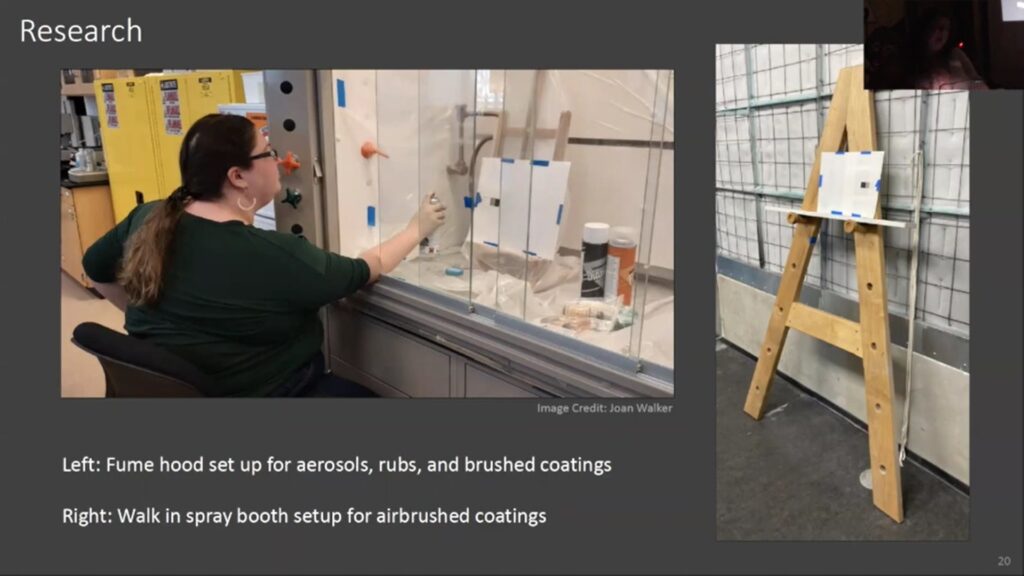Speaker: Emily Mercer, Graduate Fellow, SUNY Buffalo/Library of Congress
Summary by Lauren Gottschlich
During the WCG’s Emerging Professionals Talks, Emily Mercer presented her ongoing research of coatings on famed documentary photographer Dorothea Lange’s works. Dorothea Lange was a photographer of the early 20th century. Previously a portrait studio photographer, she changed her photographic career path from studio portraitist to documentary photographer during the Great Depression. Hired by the Resettlement Administration and later the Farm Security Administration, she captured the raw images of her time. Even if her name isn’t familiar, you most likely will recognize her photographs.

Since Lange worked for various agencies, she did not have much involvement or control over the printing process of her photographs. However, in 1966, Lange had the opportunity to delve into the printing process for a retrospective show at MOMA. Lange hired out her printing and even had control over the sequencing of the images in the gallery. Photographic prints from this show are being prepared for an upcoming exhibition at the National Gallery of Art (NGA), and therefore are undergoing examinations and analysis.
Conservators at the NGA noted that several prints from Museum of Modern Art’s (MOMA) 1966 exhibition had flaking coatings. While some details were known about the preparation from primary documents of the MOMA show, there were some unknowns. Early tests indicated that PVA was used as a coating material for some prints.
During this exciting time at the NGA, Mercer held an internship at the NGA where her time was in part dedicated to the research and characterization of the print’s characteristics, particularly as they related to the coatings. Her internship was divided into three main tasks: Categorizing the physical features of each print and the coating, utilizing External Reflectance-Fourier Transform Infrared Spectroscopy (ER-FTIR) to identify any coatings on the prints, and creating samples of the coating materials to generate a spectral database to compare against Lange’s prints.
A sampling of four prints previously exhibited in the MOMA 1966 exhibition were analyzed using ER-FTIR. Mercer discovered that of the four, two were coated in PVA, one was uncoated, and the last coated in cellulose nitrate. This indicated a diversity of coatings used for the creation of prints for one exhibition. So, Mercer created samples of coated photographic prints to compare to the original 1966 Lange prints.
Mercer’s print samples were created using Ilford Matte, Ilford Glossy, and Kodak’s Double Weight Azo photographic papers. She then coated the sample photographic prints with types of coatings that would have been available at the time such as polyvinyl acetate (both AYAA and AYAC formulas), Doulac, Acrivar and other coatings. Once prepared, the samples were analyzed using ER-FTIR to characterize each coating. Eventually, this data will be used as a comparison against the Lange 1966 prints. Such a database will allow better characterization of the coatings on the original Lange prints. Not only will this shed light on the material properties but will shed light on the creation of such an iconic photographer’s work. Mercer is currently working with Joan Walker and Laura Panadero at the National Gallery of Art to continue this project in advance of the exhibition. If you want to check out Dorothea Lange’s photographs, stay tuned for the upcoming exhibition at the NGA!
A recording of this presentation is available on WCG’s YouTube Account.